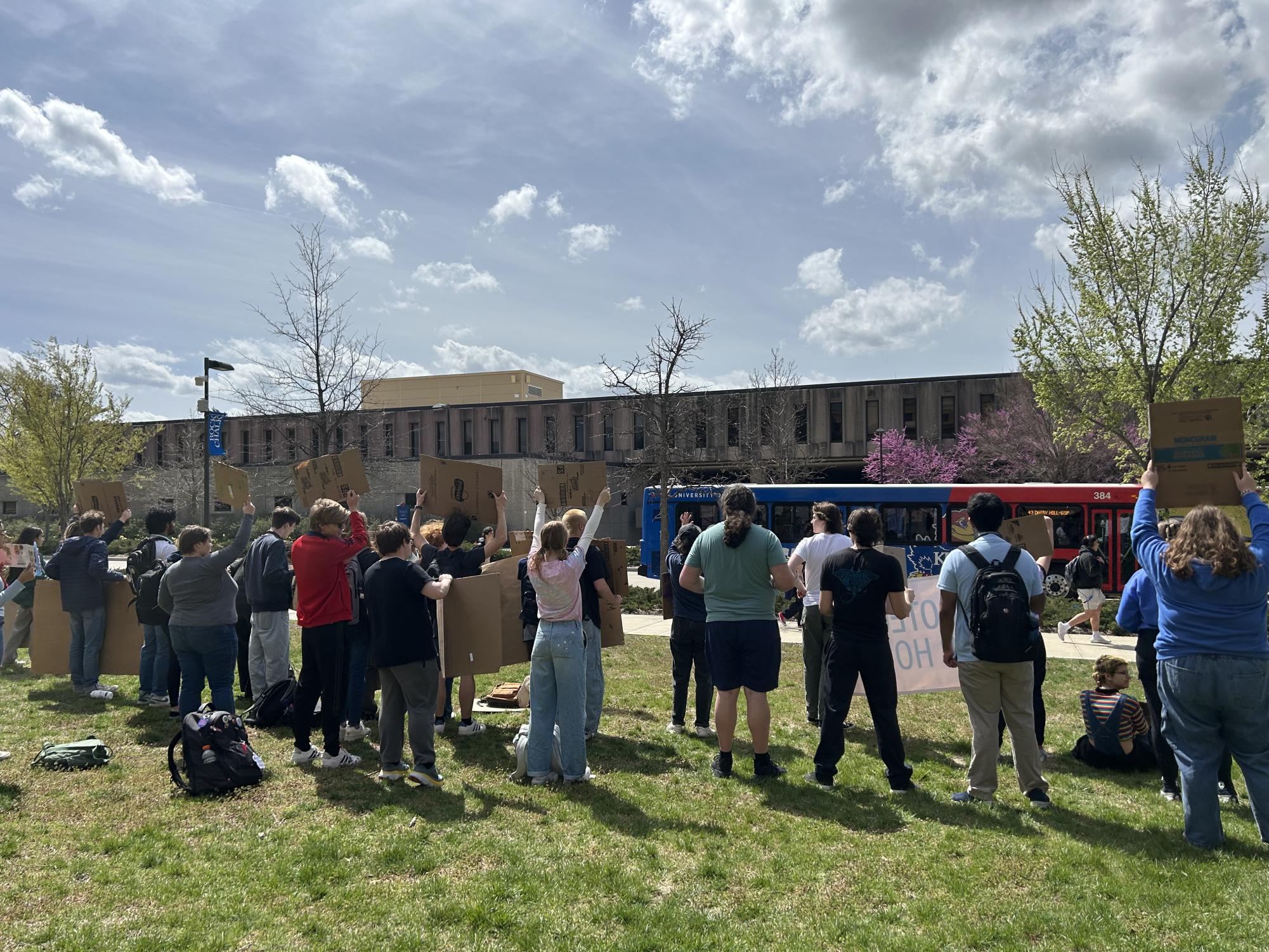Campus divided on indoor practice facility
The plan for a new athletic facility brings mixed responses to campus.
The Washburn Board of Regents unanimously approved a proposal to build an indoor practice facility on campus Dec. 13, 2017.
The Washburn University Alumni Association and Foundation announced Feb. 1 a $1.5 million matching gift challenge for the facility.
“We are thrilled with the recent $1.5 million challenge gift we received. There is a lot of excitement and energy around this project because of the impact it will have on Washburn and our community,” said Marshall Meek, president of Washburn University Alumni Association and Foundation.
This gift from the Alumni Association will match new or increased gifts to the practice facility up to $1.5 million. Meeks hopes this gift is “a catalyst for the completion of the fundraising portion of the project.”
{{tncms-inline content=”<p>"There is a lot of excitement and energy around this project because of the impact it will have on Washburn and our community”</p>” id=”c3afbfaf-c3a1-4ec9-963e-2d1a9d3c7251″ style-type=”quote” title=”1″ type=”relcontent”}}
In a press release, the practice facility is described as featuring: “a 100-yard indoor field for football, space for baseball and softball to practice concurrently, ample space for the soccer team, an indoor track and meeting rooms.”
Some on campus do not share enthusiasm for the project. A letter from the Washburn Faculty Senate asks the Board of Regents to consider the financial impact of the decision.
“We are not voicing opposition to the proposal, but would like to respectfully suggest three amendments,” the letter said. “These amendments are meant to lower the expected impact on Shawnee County taxpayers, to ease the cost of reasonable tuition increases and to maintain viable financial reserves.”
Washburn head football coach Craig Schurig sees benefits for athletic programs with the implementation of this project.
Schurig said that the facility would have “a big impact on the recruiting aspect, because it shows the commitment level of the university… to allow the team to go to the highest level.”
Head cross country and track coach Cameron Babbs is hoping that the developers include a regulation track so they can host meets.
“[The facility’s] going to be so many things for my program,” Babbs said. “The facility that they are hoping to get built, impacts us directly. For training throughout the year, and a place to call home, whether training or hosting track meets.”
Both coaches are excited for the facility and what it means for their programs. Not only will the facility help recruiting, but it will also allow athletes to train throughout the year, even in the winter months.
“I’ve never had a facility of this caliber in my coaching career, and this will allow [us] to train through the hard months and write a training plan throughout the season and stick to it and not worry about temperature,” said Babbs.
Alexis Simmons, WSGA president, submitted a letter on behalf of WSGA expressing some concerns from the student body about the project. These concerns were about the financial implications of the project and the possibility of funds being allocated away from other campus needs.
The letter expresses the need for better student services such as counseling services. It discusses the impact this project might have on the new law building, the development of usable space for students such as an expansion of Mabee Library and the overall accessibility of the campus.
In a press release, President Jerry Farley said, “This project is reflective of Washburn’s commitment to athletic excellence and continuing to build upon a top Division II program. The challenge will help us build a facility that will position our student-athletes for continued success, and we are thankful for the donors who are willing to lead us on this project.”
Above all, proponents of the project believe that the facility will bring a sense of pride.
Craig Carter, field placement director and lecturer, who works in Carnegie Hall, worries that this project might not favor success for all students.
Carter saw the campus master plan, which places proposed building projects in categories of less than five years, between five and 10 years and more than 10 years.
Carter said he sees the value in all of the proposed projects, including the practice facility, but feels that priorities could be set differently.
“When I look at the education department, which is not handicapped accessible, it’s on the 10 plus year part,” Carter said. “That’s kind of disturbing to me.”
Carter said that he believes that accessibility to all buildings on campus is more important than any other project. Especially if issues of inaccessibility might be turning students away from their desired programs.
“We have students who think ‘oh I can’t be an education major because I can’t get in the building,’” Carter said. “That’s really discouraging.”
More details will become available as the project continues into its next stages.
Your donation will support the student journalists of Washburn University. Your contribution will allow us to purchase equipment and cover our annual website hosting costs.








